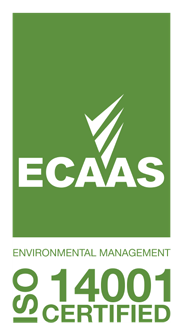Once a project design has been completed by architects and engineers and the client is happy with the outline, you're ready to begin work on the construction. However, before the team takes to the tools, it's vital that height safety guidelines and best practice are considered.
After all, more injuries happen on residential building sites than any other workplace in the construction sector, and more than 50 percent of falls are from less than three metres and approximately 70 percent of falls are from ladders and roofs. The cost of these falls is estimated to be $24 million a year - to say nothing of the human cost as a result.
Some of the main factors that contribute to work-site injuries include:
- lack of or inadequate planning and hazard assessment
- inadequate supervision
- insufficient training for the task being carried out
- incorrect protection or equipment choices
- incorrect use or set-up of equipment including personal protective equipment
- unwillingness to change the way a task is carried out when a safer alternative is identified
- suitable equipment being unavailable
Fortunately, there are really clear guidelines available (courtesy of the Ministry of Business, Innovation and Employment 2012) that give all who are involved with working at height clear direction on how to manage the work in a way that will bring down the death and injury toll.
We'd recommend taking the following best practice guidelines into consideration before undertaking any project.
Know the Hierarchy of Controls
Throughout the entire process of construction, from design to build, everyone involved in a job has a duty to make sure the highest standard of safety is upheld. Most industries in New Zealand have their own industry specific guidelines unique to their working environments, but across the board, the hierarchy of controls is a great, best-practice process to follow on the job.
As defined by the Ministry of Business, Innovation and Employment, the three hierarchy of controls are:
- Can the job can be done without exposing persons to the hazard (eliminate)? This can often be achieved at the design, construction planning and tendering stages.
- If elimination is not practicable then steps should be taken to isolate people from the hazard. This can be achieved using safe working platforms, guardrail systems, edge protection, scaffolding, elevated work platforms, mobile scaffolds and barriers to restrict access.
- If neither elimination nor isolation are practicable then steps should be taken to minimise the likelihood of any harm resulting. This means considering the use of work positioning systems or travel restraint systems, safety harnesses, industrial rope access systems and soft landing systems
Of course, a hazard assessment should also be carried before the job begins, so that the necessary equipment, systems and precautions can be implemented to keep the team safe. Through following this best-practice process from the start of a project, all the way through to completion of the job, you can be sure that your workers are as safe as they can be.
Create a Work Plan
One of the main causes of falls from height in the workplace is a simple failure to plan and organise work from the get-go. We'd suggest creating a work plan through the following process before you begin you project, and continuing to implement it throughout.
1. Identify the Hazards
At all times on a building site, you should be aware of every potential hazard. To identify any hazards, carry out physical inspections of the building site, consider any task-specific hazards, think through how stages of the production service or delivery process might change or create hazards, and do your research on accidents that have happened on similar projects or lines of work prior.
2. Asses the Significance of the Hazards
The next step is to figure out how significant each hazard that you have identified actually is. Ask yourself, "How badly harmed someone would be if they fell and how likely a fall could be?" If serious harm could be the outcome, then it’s a significant hazard.
3. Control the Hazard
Select the best work method to eliminate, isolate or minimise the potential for harm resulting from the significant hazard. Some of the measures you could put in place might include;
- use of long-handled tools from ground level
- lifting of structures build at ground level, rather than at height
- guard railed work platforms
- implementing a fall arrest system or nets to minimise the impact of a fall
Use of Controls for Height Hazards
A widely used method to control height hazards in the construction industry include scaffolding, edge protection, mechanical access plants and safety mesh.
Each of these measures have very specific regulations around how they should be installed and implemented, so make sure to refer to the 'Working at Height Best Practice Guide' for the aforementioned specifics.
Here's a quick outline of how each measure can mitigate height hazard risks on your project:
Scaffolding
Scaffolding is a temporary structure used to support work crew and materials to aid in the construction, maintenance and repair of buildings at height.
One of the more common systems for providing a safe work platform, there are many different scaffolding systems available. However, no matter the system, all scaffolds should be erected, altered and dismantled by persons who have been trained and comply with the Scaffolding, Access & Rigging New Zealand (SARNZ) Best Practice Guidelines for Scaffolding in New Zealand.
Edge Protection
Edge protection is used to prevent persons, objects or materials from falling. Often this is temporary and for use during construction, but may also be used in completed buildings (for example a permanent balustrade preventing a fall from a mezzanine floor). Guardrail barriers are also an example of edge protection that can prevent falls.
Mechanical Access Plant
Mechanical access plant includes all mechanically operated plant that can be used to gain access for the purpose of working at height. These may include:
- mobile elevating work platform
- forklift platforms
- crane lift platforms
- vehicle extension arms
- knuckle boom
Safety Mesh
Safety mesh is the preferred system for protecting construction workers against falling through a roof while they are laying roof sheets. If securely fixed, it also provides fall prevention for maintenance and repair workers. (Excerpt from Working at Height Best Practice Guide)
Not Sure if your Project is Height-Safety Ready?
No problem. It's a big undertaking to thoroughly prepare for a work-safe project. Fortunately, the team at PBI are here to help! Submit your project below for a free review.


 ISO
ISO
 ISO
ISO
 ISO
ISO
 SiteWise
SiteWise
 Masterspec
Masterspec